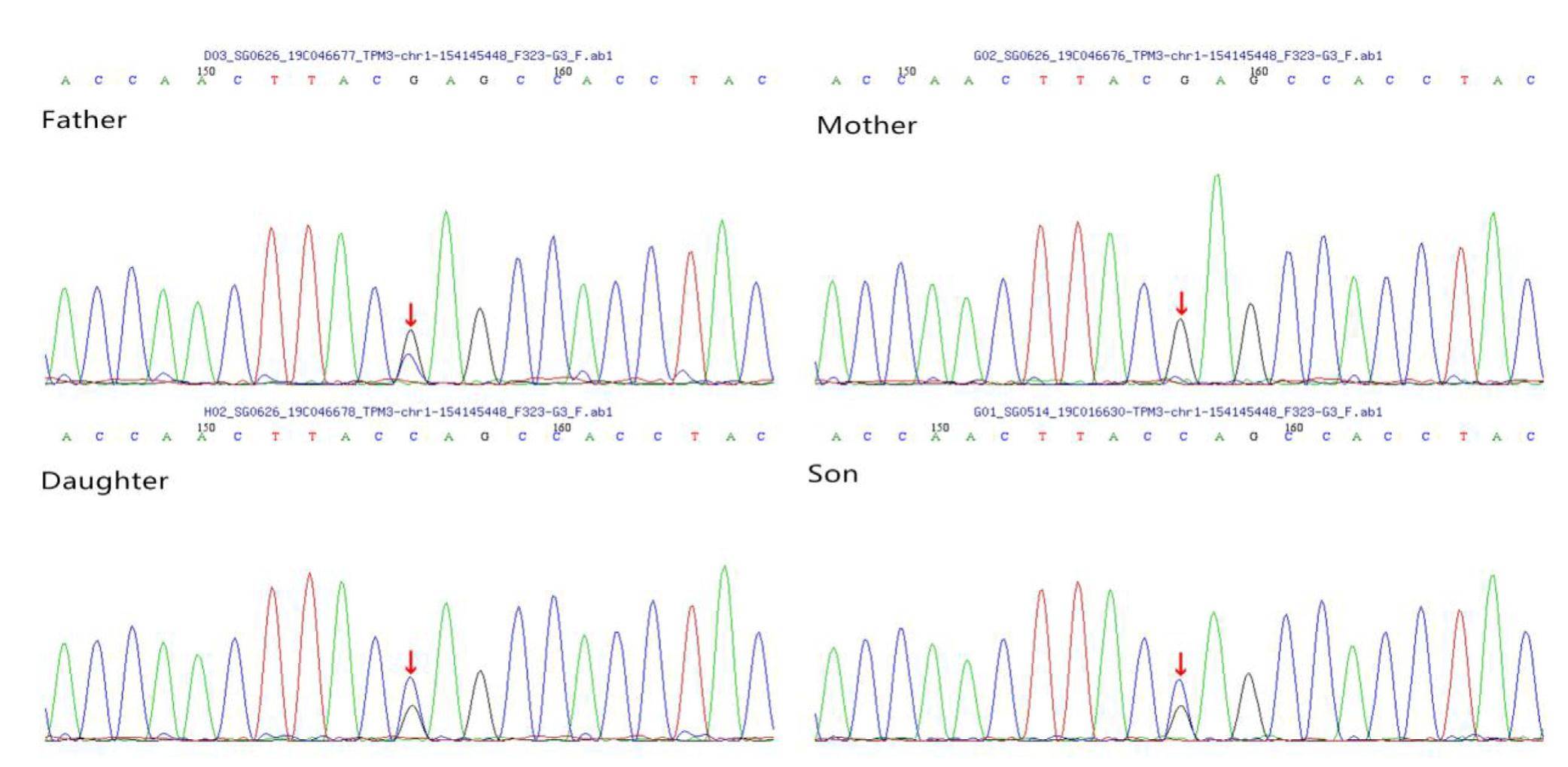
The R168G heterozygous mutation of tropomyosin 3 (TPM3) was identified in three family members and has manifestations ranging from asymptotic to serve scoliosis and respiratory complications


According to existing reports, mutations in the slow tropomyosin gene (TPM3) may lead to congenital fiber-type disproportion (CFTD), nemaline myopathy (NM) and cap myopathy (CD). They are all congenital myopathies and are associated with clinical, pathological and genetic heterogeneity. A ten-year-old girl with scoliosis was unable to wean from mechanical ventilation after total intravenous anesthesia. The girl has scoliosis, respiratory insufficiency, motion delay and muscle weakness; her younger brother has a similar physiology but does not have scoliosis or respiratory insufficiency, and her parents are healthy. We conducted genetic testing and found a c.502C> G (p. R168G) heterozygous mutation in the family. This mutation originated from the father and was autosomal dominant. Muscle biopsy results indicated that no special structures were present, and the type I fiber ratio was not notably high compared to previous reports. Although the family members have the same mutations, their clinical manifestations are quite different.
